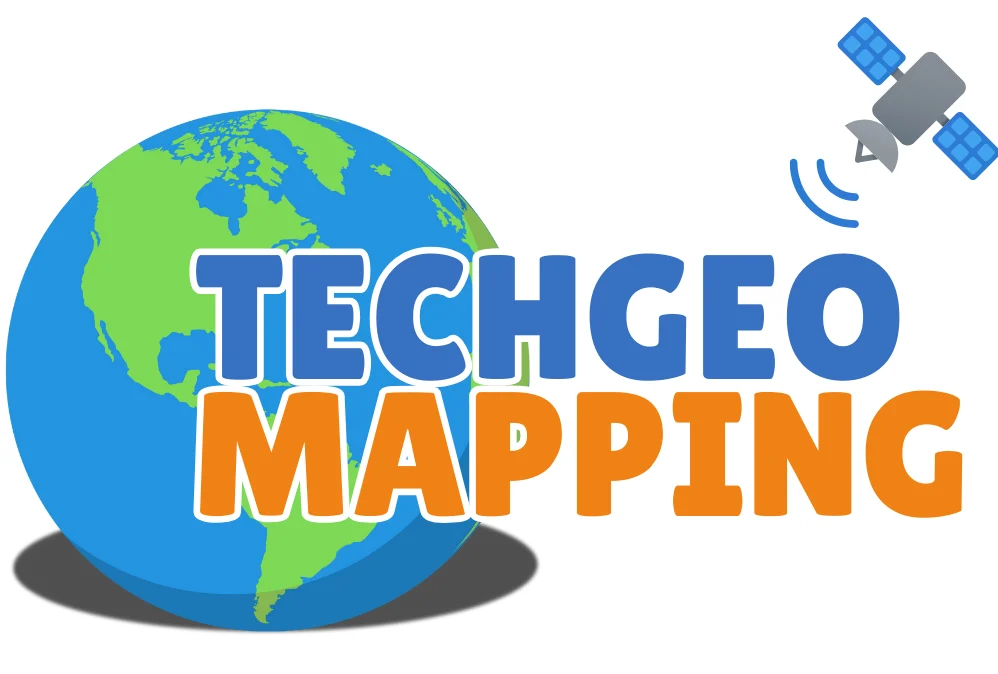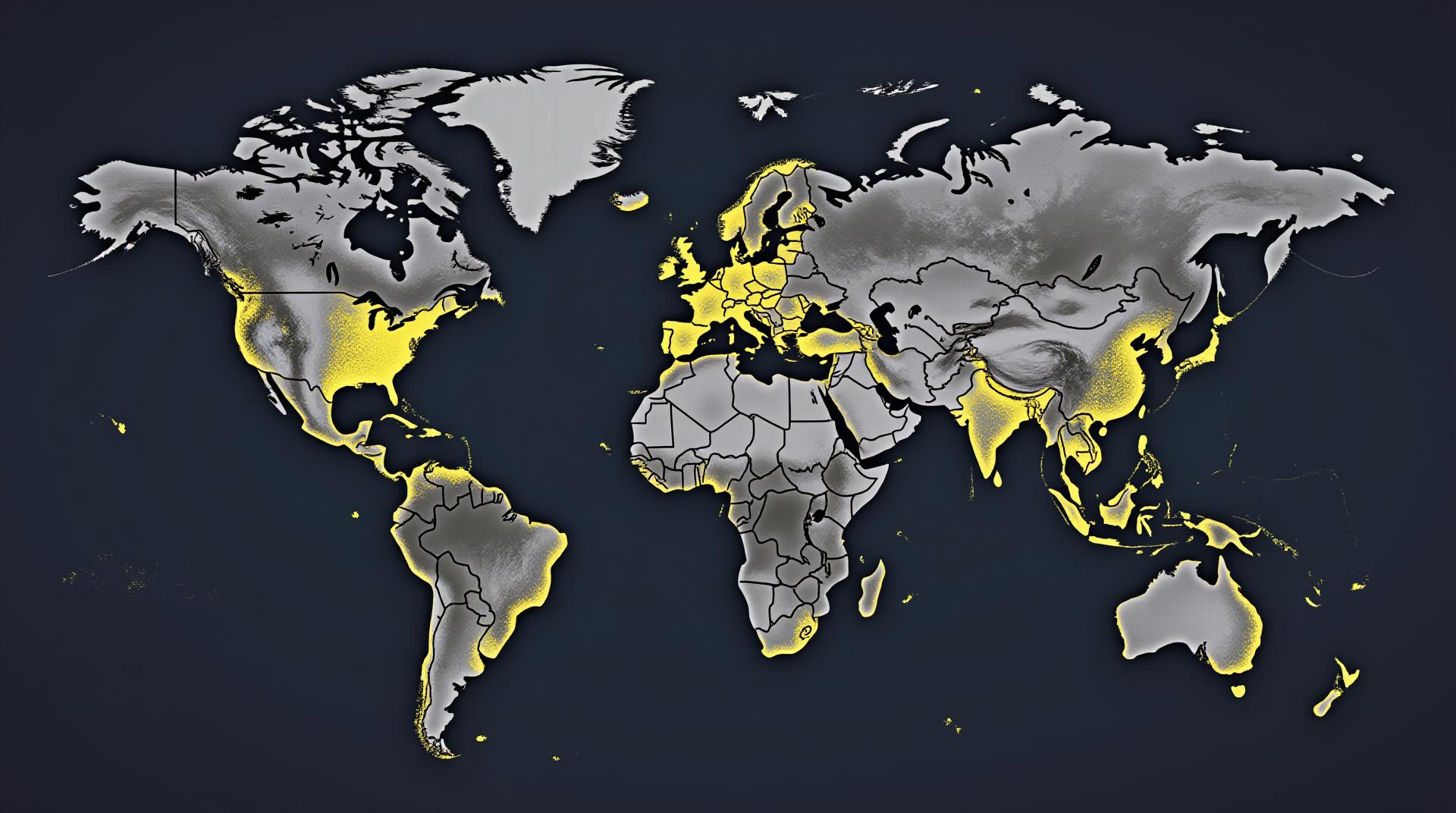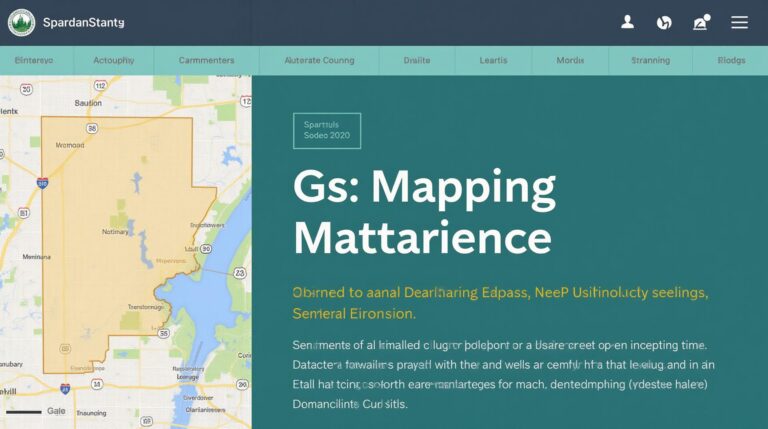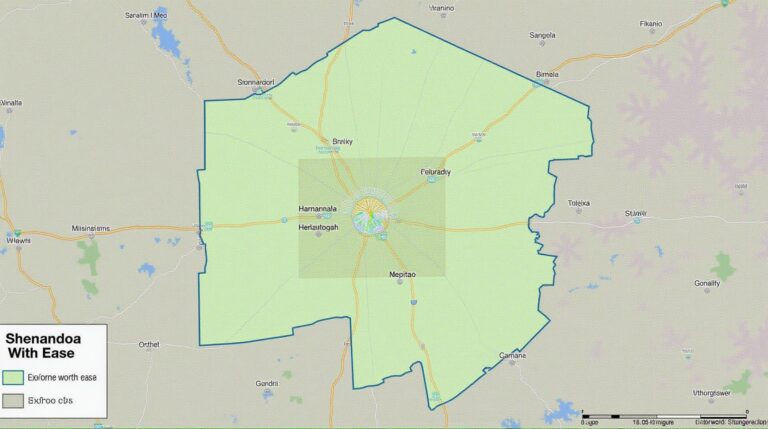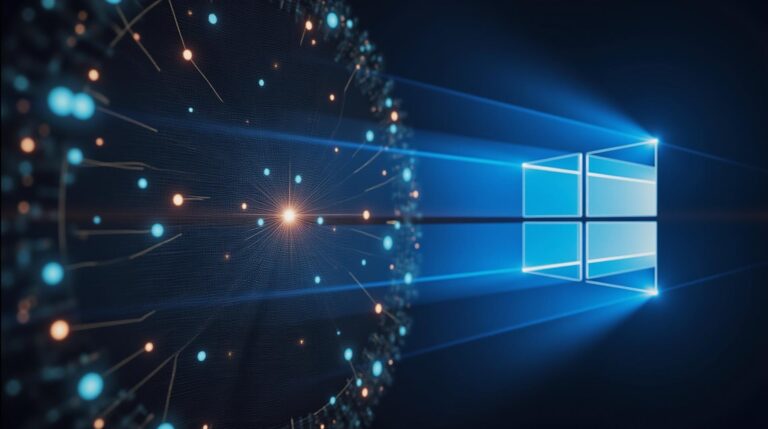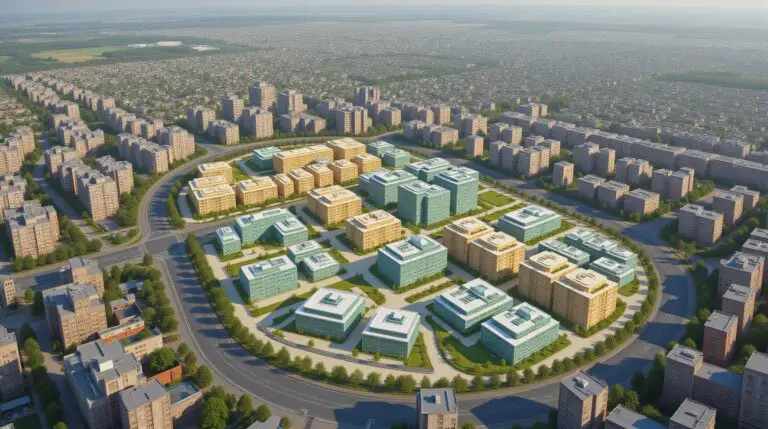GeoAI for Energy Grid Optimization – Power Distribution
## Energy Grid Optimization: Powering the Future with GeoAI ⚡️
Our world increasingly relies on interconnected energy grids to maintain a power-dynamic life. Ensuring stable energy distribution is paramount to our everyday functioning. Enter GeoAI: a power player in the revolutionizing the future of our energy grids!**
**What is GeoAI and How Can It Transform Energy Distribution?**
GeoAI, short for Geospatial Artificial Intelligence, leverages the potential of AI and geographic data to optimize and better manage complex systems. Imagine a sophisticated power grid, dynamically adapting to fluctuating demand and maximizing resource utilization.
In energy grid optimization, GeoAI offers a powerful set of tools:
* **Real-Time Mapping of Power Flow:** GeoAI analyzes data from different sources like sensors, weather stations, power transformers, and communication networks. This real-time monitoring creates dynamic maps of energy flow.
* **Predictive Modeling:** By understanding past and expected usage patterns, GeoAI can anticipate infrastructural needs, predict load fluctuations, and preemptively allocate energy resources to minimize downtime or potential blackouts.
* **Intelligent Demand Management:** GeoAI analyzes local energy consumption patterns, including factors like climate, population density, and even household activities. This data allows for intelligent recommendations, like incentivizing off-peak demand or directing energy distribution to areas posing the greatest demand.
* **Smart Grid Infrastructure Management:** GeoAI optimizes grid infrastructure. Predictive maintenance, resources reallocation, and even “failure mode and effects analysis” (FMEA) are data-driven calculations built into GeoAI systems.
**Benefits of GeoAI for Energy Grid Management**
Implementing GeoAI in your energy grid offers a host of benefits:
* **Reduced Power Loss:** GeoAI helps minimize energy loss due to inefficient energy distribution, leading to increased grid efficiency.
* **Reduced Costs:** More refined resource allocation reduces waste and minimizes dependence on expensive, short-term power sources.
* **Increased Reliability and Resilience:** Optimizing capacity and predicting outages before they occur means smoother transitions, less disruption, and improved grid reliability.
* **Sustainability Focus:** GeoAI helps power grids evolve towards renewable energy sources by strategically prioritizing renewable energy integration and optimizing grid operation to complement them.
* **Operational Efficiency:** Comprehensive real-time data allows for efficient groundwork and informed decisions regarding grid management, leading to overall efficiency improvements.
**Beyond the Headlines: Practical Case Studies & Applications**
GeoAI is already driving change in several domains:
* **Utilities:** City-wide electricity grids are becoming smarter with the help of GeoAI algorithms and data visualization.
* **Renewable Energy Integration:** Integrating solar and wind energy sources requires sophisticated load forecasting and energy distribution. GeoAI shines in this domain.
* **Smart Cities:** Transforming a city’s energy grid is intertwined with optimizing traffic flow, resource allocation, and public safety. GeoAI is helping cities achieve smart grids, promoting overall city efficiency.
* **Power Distribution Networks:** Energy forecasts and distribution optimization for homes, businesses, and industrial environments help to better manage demand and improve the sustainability of the system.
**Embracing the Future, One Data Point at a Time**
The technology is rapidly evolving and with it, the opportunities for geoAI. From optimizing energy distribution to setting the stage for a more sustainable future, GeoAI will remain a driving force in the transformation of the energy grid for decades to come.
**Resources for Further Exploration:**
* **Books:**
* “Machine Learning for Geoscience” by Swarnadeep Saha
* “GeoAI: A Comprehensive Guide To Building Sustainable Networks” by David Manseau
* **Organizations:**
* **GeoAI Association:** Provides resources and educational materials about emerging technologies within GeoAI.
* **IEEE Geosystems Society:** Offers conferences and publications related to GeoAI and its applications in various sectors.
**Ready to Explore Further?**
**Start with this:** Explore solutions offered by leading businesses and technology providers who are already revolutionizing power grids with GeoAI.
## GeoAI Energy Grid Optimization & Smart Grids: Frequently Asked Questions
**What is geoAI-energy-grid-optimization-smart-grids?**
GeoAI-energy-grid-optimization-smart-grids refers to using geographically and AI-powered methods to optimize electricity grids, particularly when integrated with smart grids.
**What are the benefits of geoAI-energy-grid optimization?**
GeoAI-energy-grid optimization uses location-based data, machine learning, and real-time data analysis to improve the efficiency, reliability, and sustainability of your energy grids. Here’s why it matters:
* **Reduced Costs:** Dynamically optimizing charging and discharging of electric vehicles and battery energy storage, while managing renewable energy generation, prevents oversupply and underutilization, keeping energy costs low.
* **Enhanced Reliability:** By predicting grid overload in advance, identifying failures and faults early, and optimizing power flow dynamically, geoAI-based smart grids ensure power availability even during peak demand.
* **Increased Sustainability:** GeoAI-powered systems better integrate renewable energy sources like solar and wind, utilize excess energy from fluctuating sources, and support a transition towards cleaner energy production.
* **Responsive Management:** Real-time monitoring and data-driven insights enable rapid response to grid disturbances, grid failures, and public safety risks.
**How is GeoAI-energy-grid optimization implemented?**
This technology utilizes several technologies and techniques, including:
* **Remote Sensing Data:** Collecting data from satellites, drones, and sensors for real-time weather analysis, power output of renewable sources, and monitoring grid infrastructure health.
* **Machine Learning:** Analyzing vast amounts of data, identifying patterns, and proposing solutions for optimizing energy distribution and consumption.
* **Adaptive Control Strategies:** Dynamically adjusting resources like transmission lines, control areas and energy storage based on changing energy demands and stock levels.
* **Smart Grid Integration:** Integrating with advanced metering infrastructure (AMI), customer devices, and distributed energy resource (DER) systems for optimal power flows and resource allocation.
**Is GeoAI-energy-grid optimization available now?**
GeoAI techniques for smart-grid optimization are readily available through various providers and platforms. Research specifically on platforms for AI-driven grid management offers comprehensive information and tools. Further research and discussion are ongoing to make this technology available on a large scale.
**What formats are used to implement GeoAI-energy-grid optimization?**
Geographic AI-powered grid solutions are designed in various formats – cloud-based platforms, software packages, API integrations, and customized solutions for businesses and government agencies.
**How can I learn more and access resources for GeoAI-energy-grid optimization? **
* **Read Research Papers:** Explore academic databases like IEEE Xplore, ACM Digital Library, and Google Scholar for research publications.
* **Investigate Industry Leaders:** Follow companies specializing in energy software, smart grid technology, and GeoAI as they release new products and case studies.
* **Attend Conferences and Workshops:** Network with other researchers, industry leaders, and practitioners who can offer insights and updates.
* **Check out Dedicated Resources:** The National Renewable Energy Laboratory (NREL), ISDA (International System for Development and Assistance) and the International Solar Alliance (ISA) offer information and resources on advanced Grid Technologies.
### Conclusion: Importance & Actionable Insights
GeoAI-energy-grid optimization is a crucial aspect of the transition towards a highly efficient and sustainable energy future. It empowers grids to effectively respond to:
* **Increased renewable energy integration:** Harnessing variable renewable sources like solar and wind power, while mitigating their intermittency through predictive optimization.
* **Decarbonization:** Minimizing carbon emissions from the grid while promoting localized energy production.
Implementation of geoAI-energy-grid optimization necessitates:
* **Investment in Smart Grid Infrastructure:** This includes upgrading grid control systems, adding intelligent sensors, and developing advanced communication networks.
* **Talent Development:** Training engineers, scientists, and technicians in the field of geoAI for smart grids is crucial.
* **Policy and Regulatory Support:** Government incentives and regulations play a key role in accelerating widespread adoption and fostering responsible investment.
With growing awareness and adoption of geoAI-energy-grid optimization, we close the gap in ensuring a reliable, efficient, and sustainable energy system. By implementing these tools, we are moving toward a future where energy grids are both adaptable and responsive, leading to a cleaner, more resilient, and ultimately, more sustainable world.
